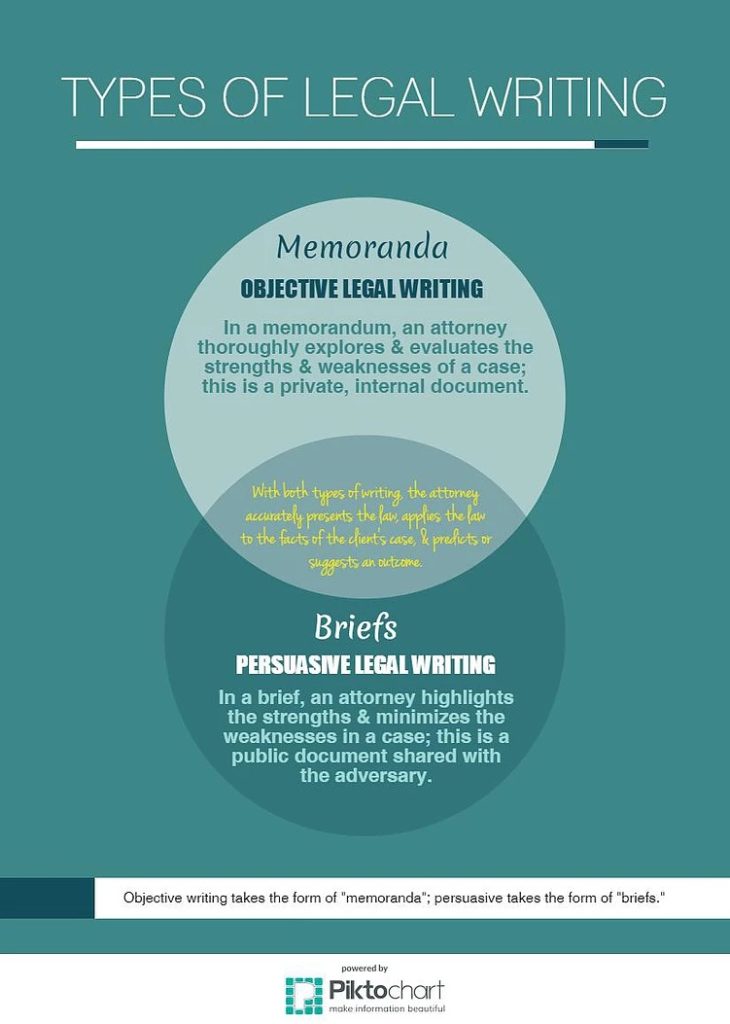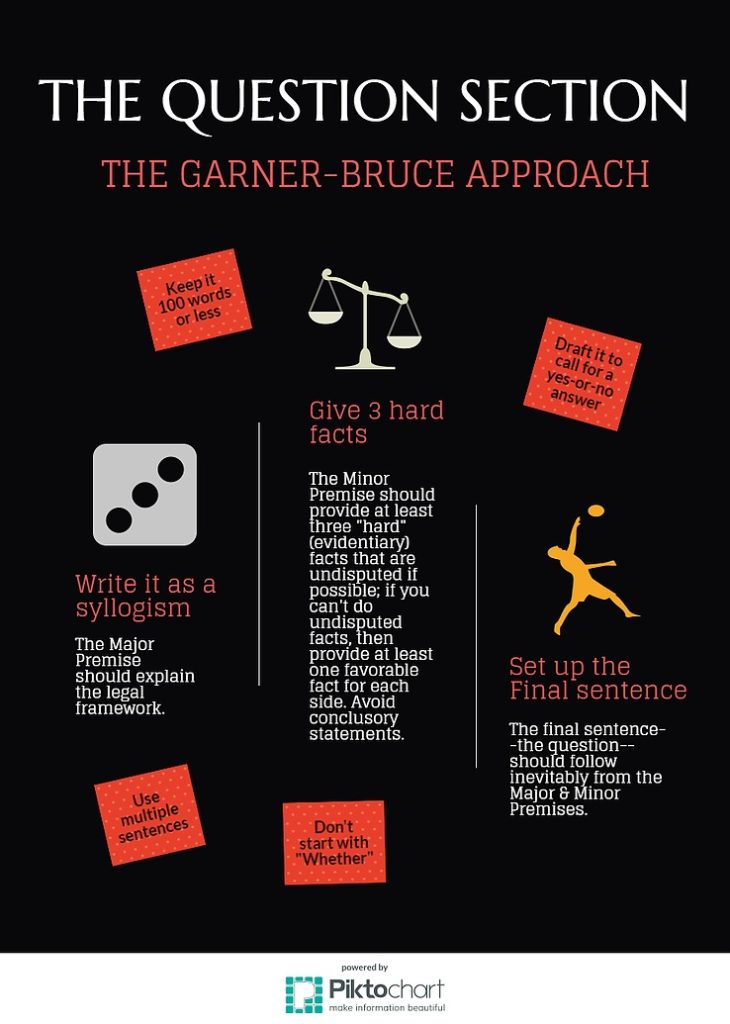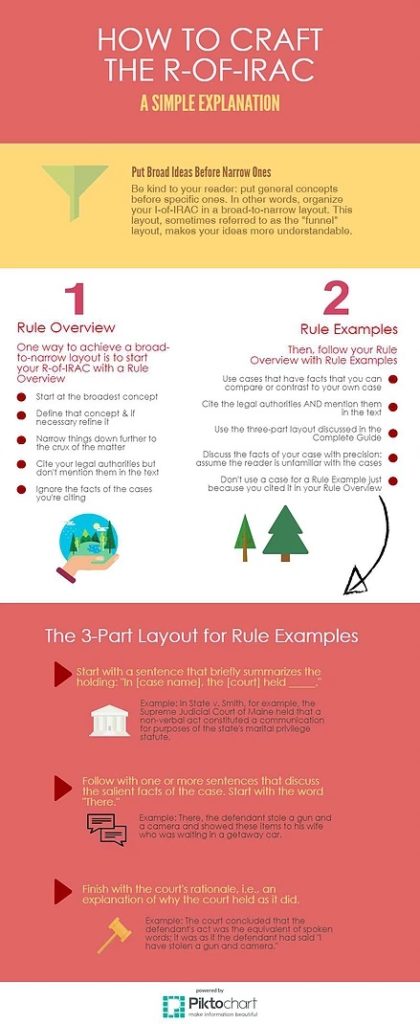The Complete Guide to Writing a Legal Memorandum
Writing as an objective author. It’s one of the skills every attorney needs to have. Being able to analyze a problem with no preconceptions, no biases. Being able to see it from all sides. Being able to tell your client the pros and cons of his case, the good and the bad, the strengths and weaknesses. A “legal memorandum” is a research paper, authored by an attorney, that does just that. It analyzes the client’s problem objectively and predicts how a judge or jury will resolve it. With this knowledge, the client can realistically assess the costs and benefits of bringing a lawsuit, going to trial, or settling.
A memorandum has six sections: (1) the Introduction; (2) the Question; (3) the Answer; (4) the Facts; (5) the Analysis; and (6) the Conclusion. The infographics, below, explain more about memoranda, generally, and memoranda sections, specifically. Click on them for more information. If you want to download one, right click on the thumbnail and save it to your computer. Please note, though, that they are summaries. For a more in-depth discussion of how to write a memorandum, you’ll need to read Part One of Objectivity and Argumentation, a Step-by-Step Approach to Legal Writing & Oratory. That Part is titled “The Complete Guide to Writing a Legal Memorandum.” It’s available for download below.

Two Types of Legal Writing
Objective legal writing (memo-writing) differs from persuasive legal writing (brief writing).
What is a Memorandum?
A legal memorandum is an objective assessment of the client’s case.
Introduction Section
These are the three primary rules to keep in mind when you write the introduction to a memorandum.
Question Section
Phrase your Question section as a syllogism: give the law as the major premise, the facts as the minor premise, and the ultimate question as the inevitable conclusion.
Answer Section
One way to avoid having an Answer that’s repetitive of the Question is by giving more detail about the application legal test than you did in your Question.
The “R” of IRAC
The R-of-IRAC should have a Rule Overview followed by a Rule Example.
For students in my classes, there’s additional information on how to write a memorandum in my workbook, The Complete Guide to Writing a Legal Memorandum.
